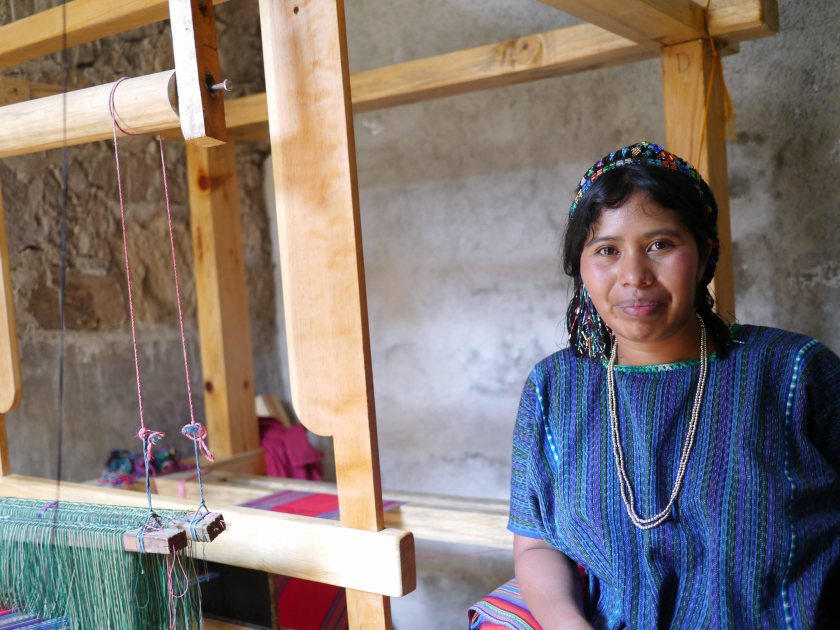
Luisa’s son-in –law, a fisherman, had had a very good night. So, she called Rosa, who invited Marco and me up to San Antonio Palpolo. She told Rosa that we should set aside some serious time for her intimate fish fry. It would be a very bony and slow going but a good time to chat. Rosa changed into her red guipil quickly and urged us into a truck. We rode high above the lake into the perilous land of the ladies in blue. Cerulean guipils hung on clotheslines everywhere in the landslide prone village. For a sapphire flash, I wondered what crisp white wine would be good to sip with lunch?
Then Marco popped out of the tienda with 2 liters of Coke and I remembered,
“We’re not in SOHO. Puchica. “
Up some snag-ly steps is Luisa’s narrow balcony where, like Rosa, she runs a FTC feeding center. A bunch of children were calmly lined up by the serving area set up on the landing. We tucked around the woman, who was doling out atoll, tortillias and beans at an astonishing speed and squeezed past a waist-high blue queue holding plates. Luisas’ studio is a small room packed with a single bed, two cabinets and mostly occupied by the frame of a large format loom -about the size of a four poster.
We sat on the bed and looked out on the quiet crowd that now and then peeked through the door. Mostly they kept their eye on what was being served.
“Luisa’s feeding center is so small that she provides take-away and seats everybody else in turns. Sometimes, it takes two hours to do the hand out,” Rosa observed.
Luisa returned with glasses for the soda and invited us to see the working loom —
“Both of the looms are gifts from Feed The Children.” As we left her room she allowed, “This one needs a harness assembly to go into production.”
In order to see the cloth in progress we needed to wind beyond the lunch area and skirt the open fire, get past two ladies patting tortillas, down a narrow path that opened into a sink area; then, down high, skinny stairs.
They were producing a batch of place mats. And, they can get twenty individual piecesif they weave the long cloth into 10”hx15”w rectangles leaving a couple of inches of fringe space in between. The finished mats are cut like sausage.
I asked if there was a lot of demand to use the looms and, when she answered in the negative, I asked her if it was because they were complicated to operate.
“No. It’s not that – many people know how to use it… It is that the investment in thread is very expensive – because you have to string such an expanse. So, unless you have a client ready to buy your finished product, it is a big risk to assume.”
A table had been set up between the bed and the loom. Luisa set out a kettle of prehistoric looking smelts swimming in Mayan Marinara …
“By August, the fish will be a half a pound, but, now (in March) they are delicacies to be consumed with utmost care. Provecho.”
We dug in and ceremoniously stripped each vertebrae of meat and talked about ways to bring embroidered textiles to market and what was need for an exhibition.